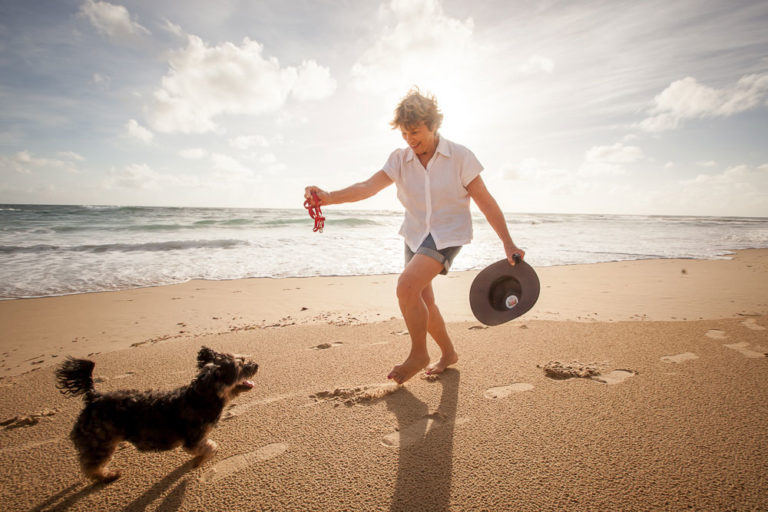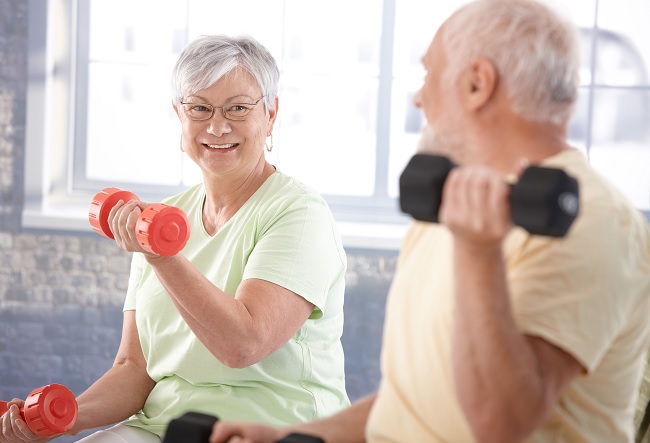9 exercises to improve your balance and prevent falls
Learn how to reduce falls by incorporating some simple balance exercises into your week.

One in three adults over 65 years of age experience at least one fall related accident per year.
As we age, our bodies gradually change. Everyday things like walking and balancing can become a little harder.
When balance issues become more prevalent, it can lead to falls and other related injuries.
The reason balancing may become harder as we age can be a result of chronic health conditions such as heart disease and dementia, which can cause dizziness. Impairments like issues with eyesight, muscle weakness and poor hearing can also result in an increased risk of falls and injuries.
A simple way to prevent falls is to introduce balance exercises into your weekly routine. The American College of Sports Medicine recommends you undertake balance training at least 3 days per week, to reduce falls by up to 40%. As well as reducing the risk of falling, balance exercises provide a number of other health benefits, including:
- Improved posture: Balance exercises help to strengthen your core muscles. By maintaining a strong core, you are able to maintain a healthy posture, which can also decrease the risk of chronic back pain.
- Stronger bones: Balance training promotes stable bones and joints, which minimises the risk of injuries and fractures in the case of a fall.
- Increased reaction times and coordination: Balance exercises provide you with greater control of your limbs and body, which not only does this improve flexibility but also helps you avoid falls. Good balance allows you to quickly adapt to unexpected situations including variance in elevation such as steps.
- Improved brain function: Regular exercise helps maintain brain function and improve cognitive ability.
Here are nine exercises you can do in the comfort of your own home to help improve your balance and reduce the risk of falls and injuries as you age:

1. Simple leg stance
The goal of this exercise is to stand on one foot and hold this pose as long as you can. To begin, stand behind a chair or table and hold on to the back of it. Lift up your left foot and balance on your right foot. Hold the pose for up to a minute, then switch feet. Repeat 10-15 times on each leg.
2. Back leg raises
This exercise strengthens your lower back and glutes while also improving your balance. To complete this exercise, grab the back of a chair or a counter top, holding it with both hands. Slowly lift your left leg back without bending your knees. Hold this position for one second, than slowly bring your leg back down. This should be repeated 10-15 times on each leg.
3. Tightrope walk
The tightrope walk is a great exercise for improving balance, posture and core strength. Hold your arms out straight from your sides. Walk in a straight line, pausing for one to two seconds each time you lift a foot off the ground. To help you maintain your balance, focus on a spot in the distance and keep your head straight. Take 10 to 20 steps before moving onto the next exercise.
4. Calf raises
Calf raises strengthen both your feet and calves while enhancing your balance. Stand near a counter or wall and hold on lightly for balance. Balance on one foot and rise up onto your toes. Hold for 10 seconds, then lower. Repeat 10 times on each leg.
5. Walking in place
Walking in place, also known as marching in place is a great balance exercise you can do around the house. To assist with balance when you first begin, this exercise can be completed in front of a table or sturdy piece of furniture.
Standing straight, lift your left knee as high as you can. Lower it, then lift your right knee. Repeat this exercise 20 times.

6. Balancing wand
This exercise can be performed while seated and is great for improving coordination. In order to complete this exercise you will need either a broomstick, walking stick, umbrella or something similar.
Dependent on the item you have chosen, hold it so it is resting on the palm of your hand. The goal of this exercise is to balance the item you have chosen for as long as you can. Alternate your hand from time to time so that you practice balancing on both sides of your body evenly.
7. Knee extensions
Knee extensions can assist in building leg strength as well as your knee joint flexibility, balance and range of motion. Simply sit on a chair, with your back straight and your arms at your sides. Lift and straighten your left knee, pause for 2-3 seconds, and lower your leg back to the floor. Repeat with your right leg and repeat 10-15 times.
8. Side leg raise
This simple exercise requires a chair to be completed. Stand behind the chair with your feet slightly apart. Slowly lift your left leg to the side. Keep your back straight and your toes facing forward and focus your sight straight ahead. Lower your left leg slowly and repeat on your right leg. Repeat this exercise 10-15 times per leg.
9. Walking heel to toe
This balance exercise improves your leg strength, reducing the risk of falls when walking. Place your left foot in front of your right foot so that the heel of your left foot touches the top of the toes of your right foot. Move your left foot in front of your right, putting your weight on your heel, then shifting your weight to your toes. Keep repeating these steps 10-20 times.
Once you have mastered these exercises, you can continue improving your balance and adding variety to your balance exercise routine by:
- Holding the exercise position for a longer period of time
- Adding movement to a pose
- Closing your eyes
- Letting go of your chair or other support you may be using.
Balancing issues and falls don’t need to be a part of everyday life as we get older. By incorporating a balance exercise program into your weekly routine, you are able to greatly minimise the risk of falls and fall related injuries.
When you start any kind of new exercise, it’s important to listen to your body and not push yourself too far. Make sure you talk to your doctor about how to undertake balance exercises safely.

Keep healthy and active with IRT
At IRT, we’ve been helping older Australians live their best lives for more than 50 years. We offer retirement living, residential aged care and home care services in various locations across NSW, ACT and Qld. We believe it's our values as a community-owned provider that help us to be the best at what we do.
Find out moreSubscribe to our newsletter
You may also like
Your guide to moving into a retirement village
When the decision to move into a retirement village has been made, the thought of packing up your old home and moving in to your…
Introduction to retirement villages
A retirement village is the perfect way to downsize your home and upsize your life.


